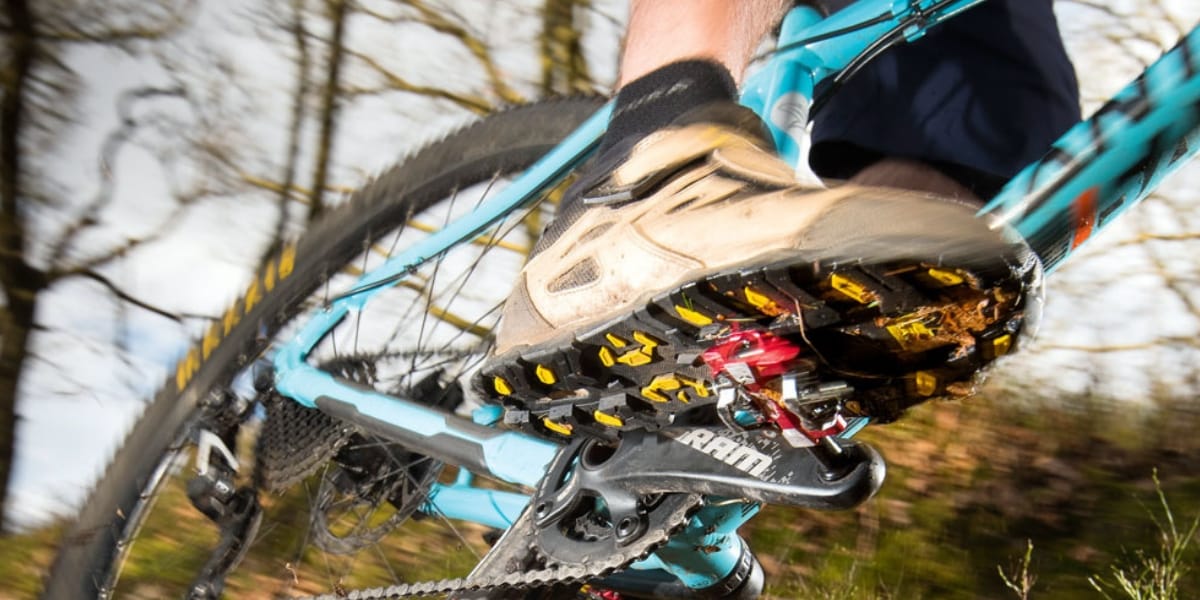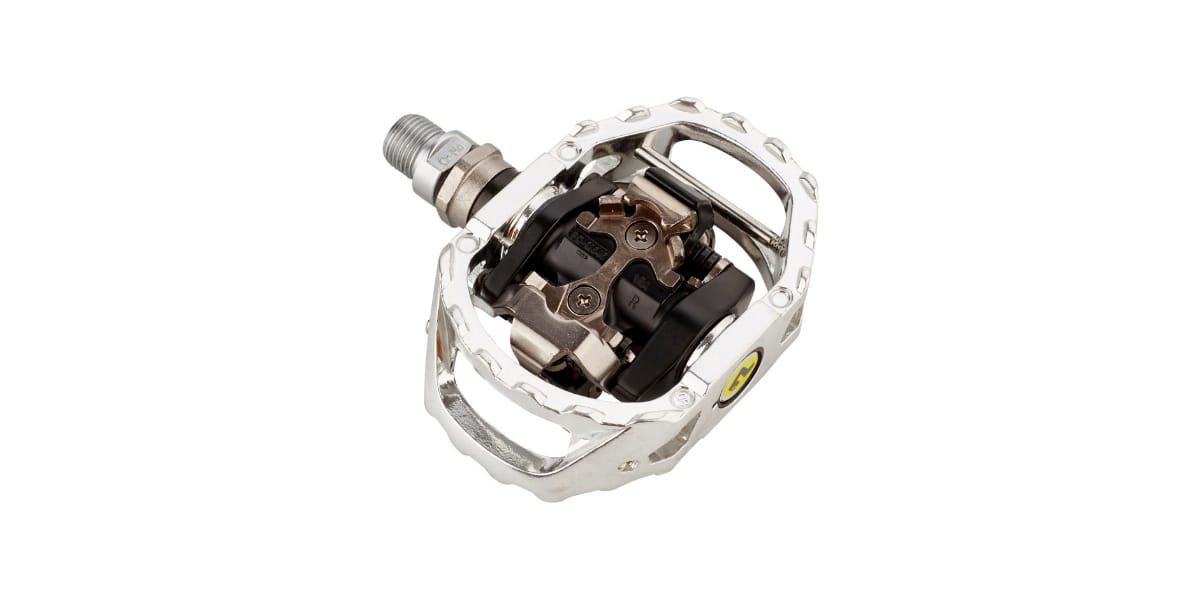
MTB pedals: the right choice between flat and automatic pedals
Content
Bicycle pedals are an essential component for propelling the bike forward or stabilizing it during technical transitions and descents. But navigating the various pedal systems isn't easy.
Which pedal suits your style best?
Pedals are divided into two main subgroups:
- Flat pedals
- Clipless or clipless pedals
Flat pedals are pretty simple: just put your foot on them and pedal. They are mainly used for freeride mountain biking and downhill skiing where a lot of pedaling effort is not required but where stability is required.
Clipless pedals allow you to attach your foot to the pedals to make the entire unit interdependent. Thus, the foot is fixed on the pedal thanks to a wedge system installed under the block.
On unclamped pedals, when the pedal is “attached” to the shoe, energy is transferred as the pedal moves up and down. This does not apply to flat pedals, where only the energy of the downward movement is transmitted.
Thus, clipless pedals provide smoother pedal travel and better fuel economy for increased speed. They combine the mountain biker with the bike, which is an advantage on technical terrain and steep climbs.
Selection criteria for automatic pedals
Key factors to consider:
- their anti-mud properties
- their weight
- snap / unfasten ability
- angular freedom, or floating
- presence of a cell
- system compatibility (if you have multiple bikes)
It's not uncommon for mountain bikes to ride in mud, and dirt build-up on the pedals can interfere with easy trimming. Therefore, it is important that the pedal is designed so that dirt can be easily removed.
Some unclamped MTB pedals may have a cage or platform surrounding the engagement mechanism.
This hybrid platform promises a large pedaling surface for added stability, protects the pedal from bumps, but adds extra weight that isn't necessarily suitable for trail running where every gram counts. On the other hand, it can be very useful for All Mountain / Enduro practice.
Pedals usually come with a cleat system that fits under the shoe.
Pedals from some manufacturers are compatible with pedals from other manufacturers, but not always. Therefore, you should check compatibility if you intend to use one set of pedals from multiple manufacturers.
The attachment system and spacers will wear out with use, which can actually make it easier to detach the clip. On the other hand, in the long run, wear can become too much, causing an excessive swimming feeling and loss of energy when pedaling. Then the cleats must be replaced first (which is cheaper than replacing the pedals).
The clipless pedals are disengaged by simply turning the heel outward.
Usually there is an adjustment that allows you to reduce the tension on the mechanism, thereby making it easier to disengage: useful for getting used to the pedal.
Floating
The floating effect is the ability of the foot to rotate on the pedals at an angle without disengaging.
This allows the knee to bend as the pedal moves, which is necessary to prevent stress and injury to this sensitive joint. Mountain bikers with sensitive knees or previous injuries should look for pedals with good lateral offset.

Pads
The cleats fit into the groove in the sole of the MTB shoe.
This allows you to walk in a normal manner, which is a fundamental criterion in mountain biking, as the routes usually use push or support sections and in these cases the shoe's grip must be optimal.
When to change gaskets?
- Trouble putting on or taking off your shoes: remember to adjust the tension spring before replacing the cleats!
- Reduced angular freedom
- Damaged Thorn: The thorn is broken or cracked.
- Deterioration in appearance: the spike is worn out
Fastening systems
Shimano SPD (Shimano Pedaling Dynamics): SPD systems are renowned for their performance and durability.
Crank Brothers: The Crank Brothers pedal system cleans dirt well and allows you to clip them on all four sides. However, they require more maintenance than some models.
Time ATAC: Another long-standing favorite of mountain bike and cyclocross enthusiasts. They are prized for their good ability to clean up dirt and for their constant switching on and off, even in the harshest conditions.
Speedplay Frog: The mechanism is inserted into the cleat, not the pedal. They are known for their durability and great buoyancy, but the cleats are wider than most and some shoes may not be compatible.
Magped: New to the market, more freeride and downhill oriented, the mechanism is a very powerful magnet. Comfortable to put your foot on and have everything you need.
Our advice
If you haven't already, try experimenting with unclamped pedals. In the beginning, you will inevitably fall to understand the reflex it takes to take off your shoes naturally. Therefore, we recommend that you protect yourself as much as possible (elbow pads, shoulder pads, etc.), as if you were going to go down the mountain.
It should come in in a few hours and you should be able to get the most out of it when you pedal.
For compatibility, we prioritize the Shimano SPD system. If you have multiple bikes: road, mountain and speed bikes, the range will help you navigate all your workouts while keeping the same pair of shoes.
Our preferences according to practice:
Cross country and marathon
Shimano PD-M540 is a simple and effective pair of pedals. Lightweight and durable, they are minimalistic, making them suitable for x-country activities.
The All-Mountain
Versatility comes first here: strap on the pedal and switch to cleatless mode for technical details. We have successfully tested the Shimano PD-EH500 and they never leave our mountain bikes.
Gravity (enduro and downhill)
If you're not jumping with Red Bull Rampage-worthy pieces, you can navigate on pedals without cage clamps. We have been riding successfully with the Shimano PD-M545 for several years now.

We also tested Magped magnetic pedals. Good grip thanks to wide cage and support with pins. The magnetic part is only on one side, but provides stability well suited to practice once we have found it. It can also be a good compromise for a mountain biker not wanting to step directly into the automatic pedals.

